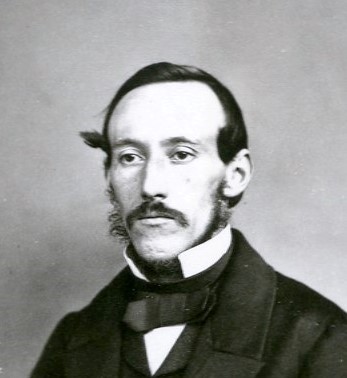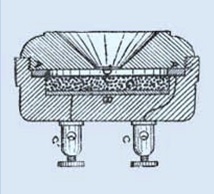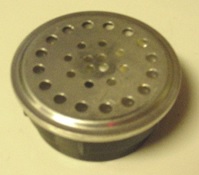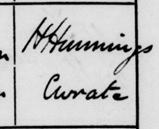Rev Henry Hunnings MA (1842-1886) - Clergyman & Inventor

The Inventor
During this time Henry created his own telephone transmitter device which he patented in the UK on 16th September 1878. The Hunnings Transmitter was a great success, the secret being the use of carbon granules behind the diaphragm and this produced a clearer, stronger voice signal than any other at that time. He was able to produce carbon granules by crushing cinders he collected from Bolton Percy railway station.

His friends, Edward Harrison and Edward Cox-Walker, produced a “Hunnings Micro-Telephone” which retailed at 15 guineas and on 27th January 1880 they gave a bold public demonstration. Using existing telegraph wires that ran alongside the railway they connected up their telephone devices at Darlington and York Stations, a distance of 45 miles. This proved to be a huge success as both parties exchanged clear conversations and songs with great amusement.
Following legal arguments which commenced in 1882, whereby Alexander Graham Bell & Thomas Edison had accused Hunnings and friends of copying their patents, and which concluded with an Appeal in January 1883, Hunnings agreed to sell his patent to Edison for £1,000. He also agreed to appear as an ‘expert witness’ on behalf of Edison at some future Court cases.

GPO Telephone Carbon Granule Transmitter still in
production in the late 1960s
The Clergyman
Whilst in Bolton Percy Henry Hunnings lived at ‘The Rectory’ and was one of the Curates at All Saints' assisting the Venerable Archdeacon Stephen Creyke who was in charge at the time.

It was at Bolton Percy where Henry met Margaret Ann Ridley. Margaret lived with her family in one of the cottages adjacent to the Church and in 1880 at the ages of 37 and 19 respectively Henry and Margaret were married. They subsequently had two children together; William Butters and Katherine Mary. Henry left Bolton Percy in 1880 taking other Curate’s positions in Seaforth (Lancs), Rothwell (Leeds), Ryde (Isle of Wight) and Eling (Hampshire) before securing his final role in November 1885 as Chaplain of Royal South Hants Infirmary.
However, by this time he was in poor health and in fear of losing his job he sadly took his own life at his home in Southampton on 4th May 1886. The post mortem held later that month gave a verdict of “Suicide in an unsound state of mind”. On his death Henry left an estate valued at £1222, 12s, 6d.
As well as being a clergyman and inventor, Henry Hunnings was an accomplished pianist and photographer. His original photograph of Maori leader Hare Pomare (credited to WJ&H Hunnings) taken in January 1864 is now held at the National Library of New Zealand.
----------------------------------------------------------------------------------------------------------------------------------------
This abridged article is reproduced with permission of the copyright owner Alan Swain (York). The photograph of Henry Hunnings is reproduced with permission of Bruce Castle Museum (Haringey Archive and Museum Service).
For further information please email friendsasbp@yahoo.co.uk.